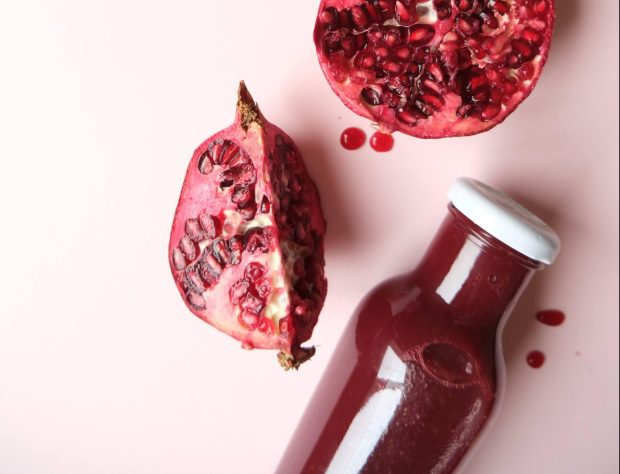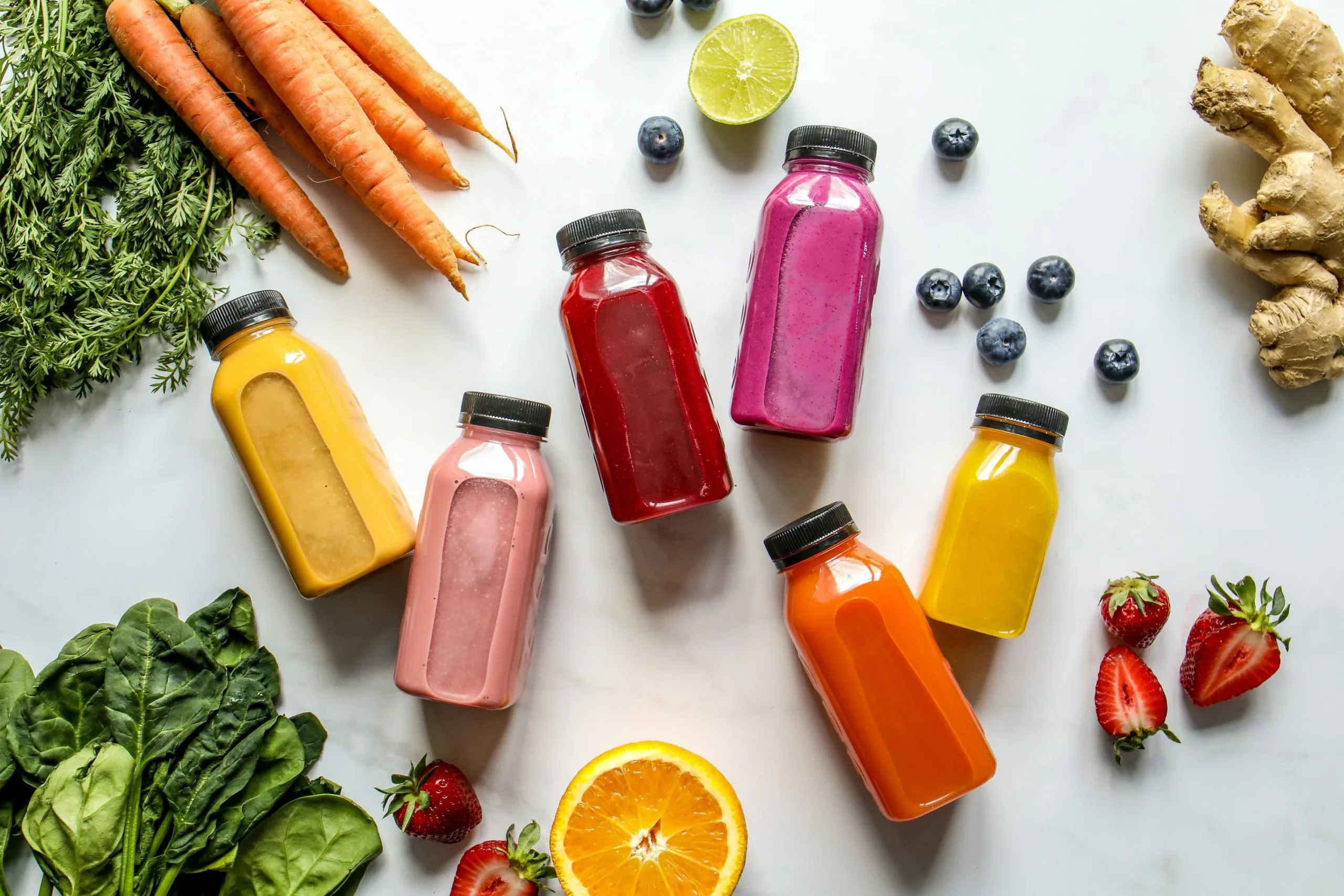Fruits and vegetables are extremely vital for our health. From lowering your blood pressure to reducing your risk of stroke and heart disease, a diet rich in fruits and vegetables yields a wide range of health benefits.
According to the 2020-2025 Dietary Guidelines for Americans, it is advised that adults consume about 2 cups (or equivalent) of fruits, and 3 cups (or equivalent) of vegetables daily. The World Health Organization (WHO) recommends a “5-A-Day” diet, which consists of eating 5 portions of a variety of fruit and vegetables every day (with a portion equating to 80g). However, most people aren’t reaching this requirement.
We’re Not Eating Enough Fruits and Vegetables
The Centers for Disease Control and Prevention reports that only 1 in 10 adults are eating enough fruits and vegetables. From not having enough time to cook healthy, nutrient-filled meals, to the convenience that comes with fast food, there are numerous reasons which could contribute to this low level of fruit and vegetable consumption. However, juicing may just be the quick and effective solution to combat this.
What is Juicing?
Juicing is a process whereby the juice, vitamins, and minerals from fresh fruits and vegetables are extracted. The juice is more than just a healthy form of hydration. It is loaded with antioxidants, phytonutrients, and anti-inflammatory compounds which are present in the whole fruit or vegetable, making it a source of various health benefits.
Methods of Juicing
While juicing methods vary (from hand-squeezing fruit to motor-driven juicing), there are two common methods of juicing used, namely:
- Cold-Pressed: As the most popular method of juicing, this utilizes a hydraulic press to extract the maximum amount of liquid from fresh fruits and vegetables. Since there is no heat or high speed involved in this process, there is lower oxidation. This means that the juice’s integrity is maintained. This leads to the juice being high in vitamins, minerals, and enzymes naturally found in the fruit or vegetable, with it containing 13-16% more nutritional content than juice extracted through a centrifugal machine. Since there is no remaining pulp residue, it is easier for the body to absorb.
- Centrifugal: If a store-bought juice doesn’t state that it is cold-pressed on the packaging, it means this method was utilized to make it. This method entails grinding fruits and vegetables into a pulp by utilizing high-speed spinning blades. Although this is a fast, effective, and affordable method, the process affects the integrity of the juice. The problem with this method is that the fast-spinning metal blades generate heat. This then oxidizes nutrients and enzymes from the fruits and vegetables, making the juice less nutritious.

Photo by Işıl on Pexels
How Is Juicing Different From Blending?
While these two might seem like the same process, there are a few key differences. Blending grinds up the whole fruit or vegetable, not extracting nutrients and water the same way juicing does. The result of blending is a thick “smoothie” textured drink, as opposed to an ultra-liquid juice. This makes it easier to digest, as opposed to blending, where fiber remains and can pose health issues for those with digestive issues (including bloating, constipation, and gas).
The Advantages of Juicing
Increased Fruit and Vegetable Intake
It is advised that for those who struggle to consume the daily recommended amount of fruit and vegetables, juicing is a convenient way to increase intake levels. Adam Drewnowski, Ph.D., director of the Center for Public Health Nutrition at the University of Washington, states that “…100% fruit juice is the most effective way to meet the fruit shortfall…”.
A study found that supplementing mixed fruit and vegetable juice into one’s diet over 14 weeks had improved nutrient levels of the following:
- Vitamin C: This antioxidant is essential in protecting your cells against the effects of free radicals, which play a role in heart disease and cancer, amongst other diseases. It improves iron absorption, lowers blood pressure, and boosts immunity.
- Vitamin E: Also acting as an antioxidant, it supports immune function, promotes eye health, and may even prevent coronary heart disease.
- Beta Carotene: Converted into vitamin A (Retinol), this is essential for maintaining eye health, a strong immune system, healthy-looking skin, and lung function.
- Selenium: This is essential in fighting oxidative stress and defending the body from chronic conditions. It also impacts your metabolism and thyroid function.
- Folate: Converted into Vitamin B-9, this is essential for red blood cell formation, healthy cell growth and function, and lowering your risk of heart disease.
- Phytonutrient Boost: Phytonutrients (literally meaning plant nutrients) are natural compounds found in fruits and vegetables. Acting as antibacterial agents, these nutrients have been shown to prevent cell damage throughout the body. Additionally, they’ve also been shown to reduce the risk of cancer, strokes, heart disease, and Alzheimer’s disease. Phytonutrients (specifically epicatechin, curcumin, and quercetin) also play a role in anti-aging. With red grapes, cherries, spinach, kale, and tomatoes considered “high phytonutrients”, juicing allows you to reap these benefits. A study on Nutrients found that having just ½ a cup of grape juice per day gives the body enough polyphenols, a type of phytonutrient, to reduce your risk for cardiovascular disease by significantly lowering your blood pressure.
Can Juicing Act as a Meal Replacement?
We’ve all heard of juice cleanses, which are known to help you detox and even contribute to weight loss. However, there isn’t enough evidence to suggest that juice cleanses are beneficial and healthy.
Sharon Horesh Bergquist, MD, Assistant Professor of Medicine at the Emory School of Medicine, states that “…Your body is a detoxification machine, fully built with its own elaborate way of ridding toxins and unwanted chemicals.”
Relying on these juices as a meal replacement could do more harm than good. There is some evidence linking juice cleanses to kidney problems, blood sugar spikes, dehydration, and electrolyte imbalances.
Juice cleanses restrict your calorie intake, and diets low in calories can leave you feeling weak, with a negative impact on your metabolism. A review published in Current Gastroenterology Reports found that although juicing may trigger initial weight loss due to low-calorie content, it leads to weight gain once one resumes their regular diet. Dr. Bergquist adds that “without adequate protein and calorie intake, your body may switch to breaking down muscle for energy.”
Incorporation, Not Replacement
So, to answer the question, using juices as a meal replacement can be detrimental to your body. This is due to low fat and protein levels, both of which are required for maintaining long-term health. While juicing can be used to supplement a healthy diet, it cannot replace it. The trick here is to incorporate them, not use them as replacements. But before you embark on juicing, make sure you consult your doctor to ensure that it doesn’t do more harm than good.





![women [longevity live]](https://longevitylive.com/wp-content/uploads/2020/01/photo-of-women-walking-down-the-street-1116984-100x100.jpg)









